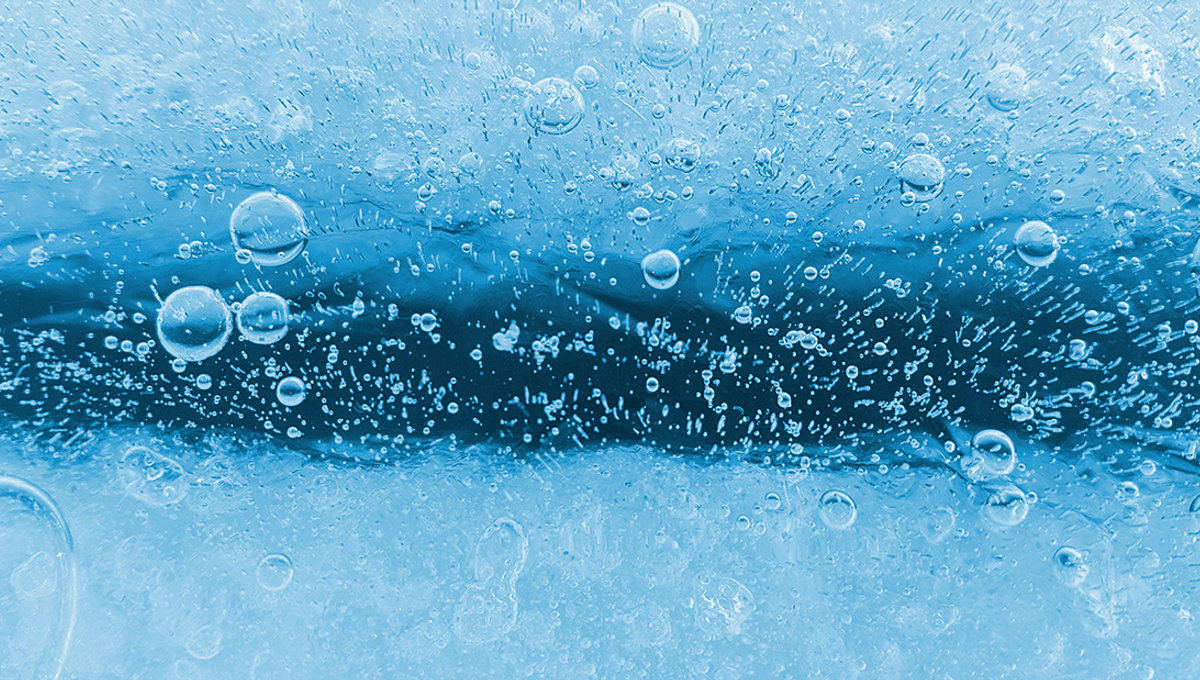
A team of researchers inspired by naturally occurring bubbles trapped in ice has come up with a novel way of using human-made bubbles to encode messages – and store those messages inside ice.
Ice cores are a pretty good way to get an idea of the Earth’s atmosphere in the ancient past, thanks to their ability to trap bubbles of gas within them.
“Like a prehistoric fly trapped in amber during dinosaurs’ days, airborne relics of Earth’s earlier climate—including dust, air bubbles, sea salts, volcanic ash, and soot from forest fires—can end up trapped in glacial ice for eons,” the National Oceanic and Atmospheric Administration (NOAA) explains. “To climate scientists, those relics tell a story about how our planet’s climate and atmosphere have changed over thousands of years.”
Climate researchers regularly analyze bubbles in glacier ice to study our planet’s history.
But the team behind the new study were inspired by these bubbles’ longevity, and wondered whether it would be possible to store information in this way.
“As our activities gradually expand to cold regions such as the poles, moon, and Mars, the production of document and telecommunication-based messages faces increasing challenges owing to the requirements for ink, power, and equipment, and the long-term preservation of paper and magnetic media for storing messages also becomes difficult,” the team explains in their paper. “Inspired by the natural air bubbles in glaciers, which record and preserve samples of air from the early history of the Earth, we found that it is possible to store messages by manipulating trapped air bubbles in ice.”
Bubbles are trapped in ice as water freezes and dissolved gases are squeezed out and pushed together, usually taking on an egg or needle-like appearance. The team attempted to test what conditions caused the different sizes and shapes these bubbles take, using a cold plate and water.
The team found that faster freezing led to the egg-like shape, and slower freezing led to the needle shape.
“Since bubble position and shape are determined by the freezing rate, it is possible to manually control the freezing rate to manipulate the shape and distribution of bubbles in ice,” mechanical engineer and author Mengjie Song, affiliated with the Beijing Institute of Technology, said in a statement.
Using this, they were able to build up layers in ice containing no bubbles, egg-like bubbles, and needle-like bubbles when needed. They were then able to manipulate which bubbles were needed in each layer, and assigned bubble shapes, sizes, and positions to characters in Morse code and values in binary. Using computer code to control the process, they were then able to make messages encoded within bubbles in the ice.
The messages trapped within the ice could then be read back by photographing the ice and converting the photo to grayscale. They then got a computer to detect the positions and shapes of the bubbles, which appeared as almost white against the background gray, and convert them back to readable English letters and Arabic numerals.
After testing the methods, they found that binary was more efficient, being able to store messages around 10 times as long as those stored in Morse code. So how might this be useful? According to the team, the method could be used for storing information in Antarctica and the Arctic, where normal storage methods is difficult or highly expensive.
“In naturally cold regions, the use of trapped air bubbles as a means of message delivery and storage uses less energy than telecommunication and is more covert than paper documents,” Song added. “These ice messages can be preserved for a long time and the messages they carry are easy to visualize and read.”
The advantage is that it naturally uses the cold environment and water, which are not exactly in short supply in the polar regions, and no power is required to store the information. But there could be other applications too. For example, manipulating bubbles in ice could make it easier to create sheets of ice which have natural snapping points, like perforations in graham crackers. Or it could help us understand how bubbles form in metals, which we cannot photograph internally.
“Our findings can be widely applied in many areas,” Song added. “In our daily life, we can manipulate bubbles to efficiently produce ice with different bubble contents and create beautiful ice sculptures. In industry, our research can help with metal smelting and manufacturing, as well as de-icing for aircraft and ships.”
The team plans to continue their work on bubble formation in 3D environments, including looking at different gas types and their effect on bubble ice.
The study is published in Cell Reports Physical Science.
Source Link: Researchers Use Bubbles To Encode And Store Messages In Ice, And Read Them Back From Photographs